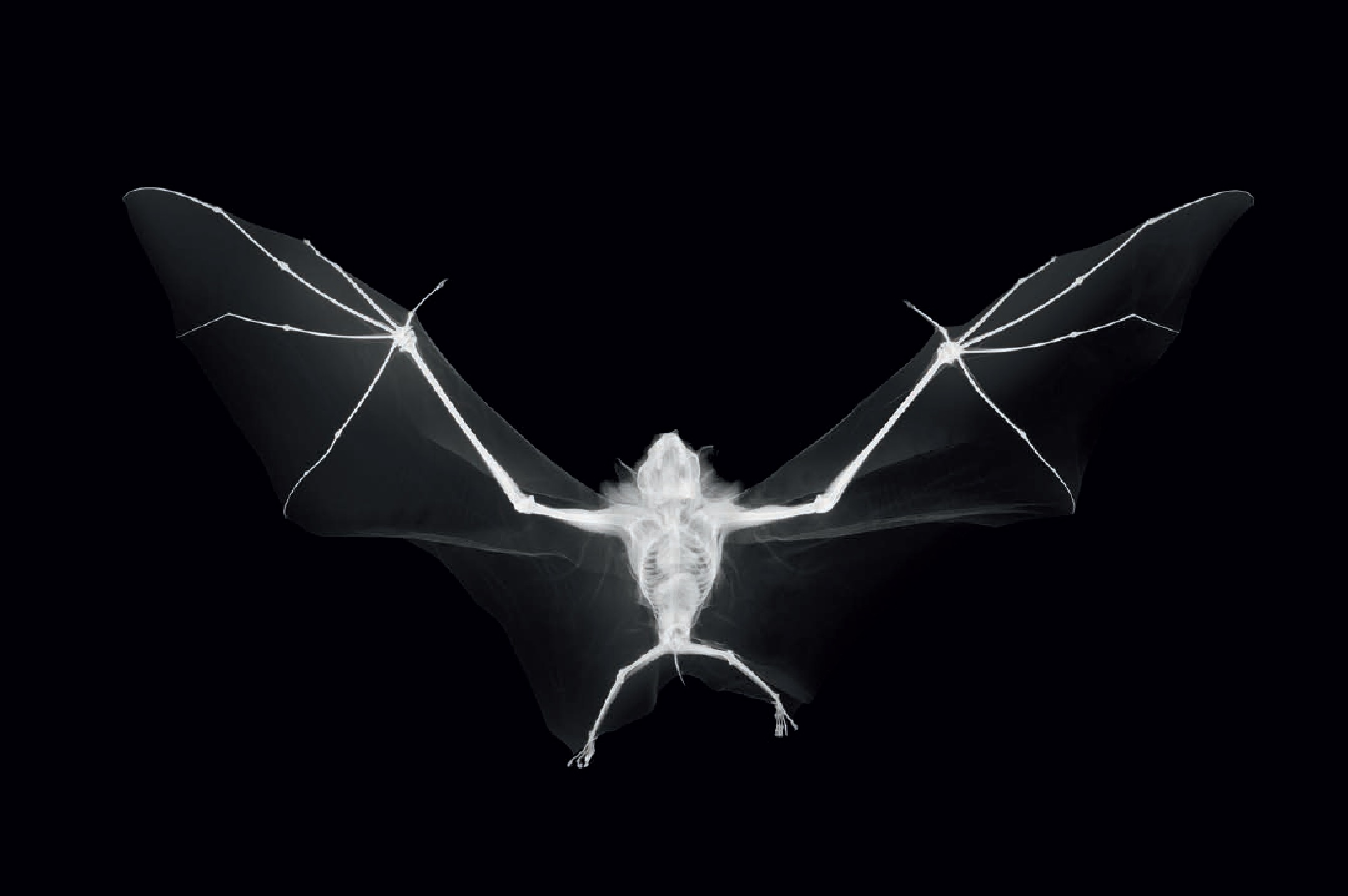
Astonishing Animals – The Fruit Bat
Nick Veasey's radiographic photo is just one of 300 amazing images in Animal: Exploring the Zoological World
This striking X-ray photograph shows the impressive wingspan of a fruit bat, revealing the long bones of the five fingers that stretch its delicate wing membrane for flight.
This image of the Fruit Bat (or Flying Fox, as it's sometimes called) is just one of many incredible depictions of animals - over 300, in fact - featured in our new book Animal: Exploring the Zoological World.
The British photographer Nick Veasey's large-scale radiographic image reveals the creature’s lightweight skeleton, and its sharp claws. Seen from below, the animal appears to be in mid-flight, perhaps having just launched itself from a tree in search of food. Unlike smaller species of bat, it does not use echolocation – most bats navigate by emitting radar signals that bounce back off surrounding objects – relying instead on its acute eyesight and sense of smell.
The animal is native to the tropics and subtropics of Asia, Australia, East Africa and the Pacific Islands. It is considered to be a culinary delicacy on the island of Guam.
However, Veasey did not photograph a live bat, using instead a dead specimen bought on the Internet. This allowed him to carefully pose the creature just as he wanted for the long exposure time required by his radiographic camera; indeed, such an image would be impossible to achieve with a live animal.
The photographer is known for his unusual X-ray images, which reveal the hidden inner secrets and beauty of all manner of subjects: not just animals and people, but also objects from telephones to jet airliners.

See more of the 300 plus ways we have documented the animals around us throughout time by ordering a copy of Animal: Exploring the Zoological World here. And check out our previous stories on Sir Edwin Landseer's Monarch of the Glenn, Underwater photographer Alexander Semenov's Lion's Mane Jellyfish, Cai Guo-Qing's Heritage and The Steppe Bison.